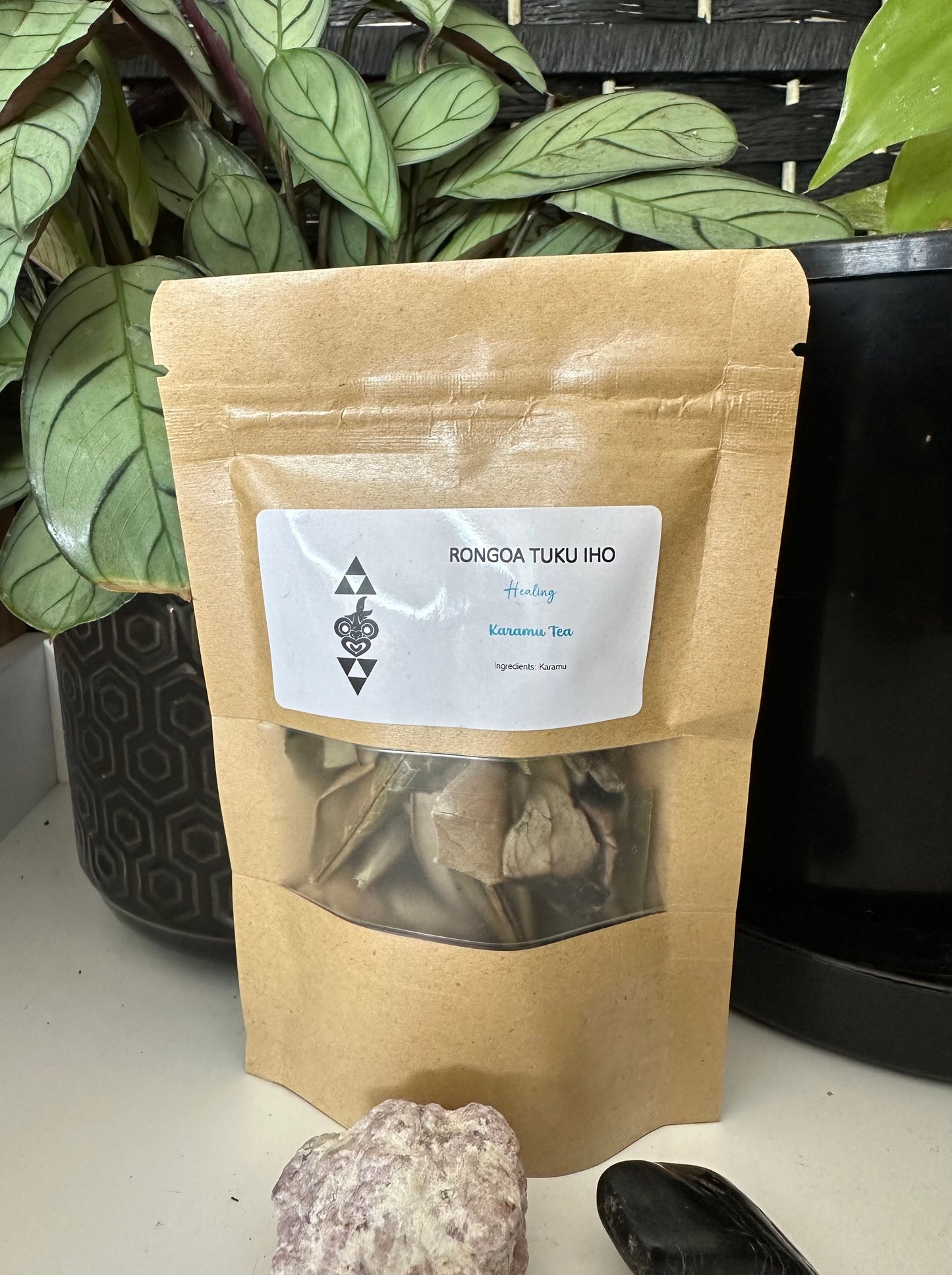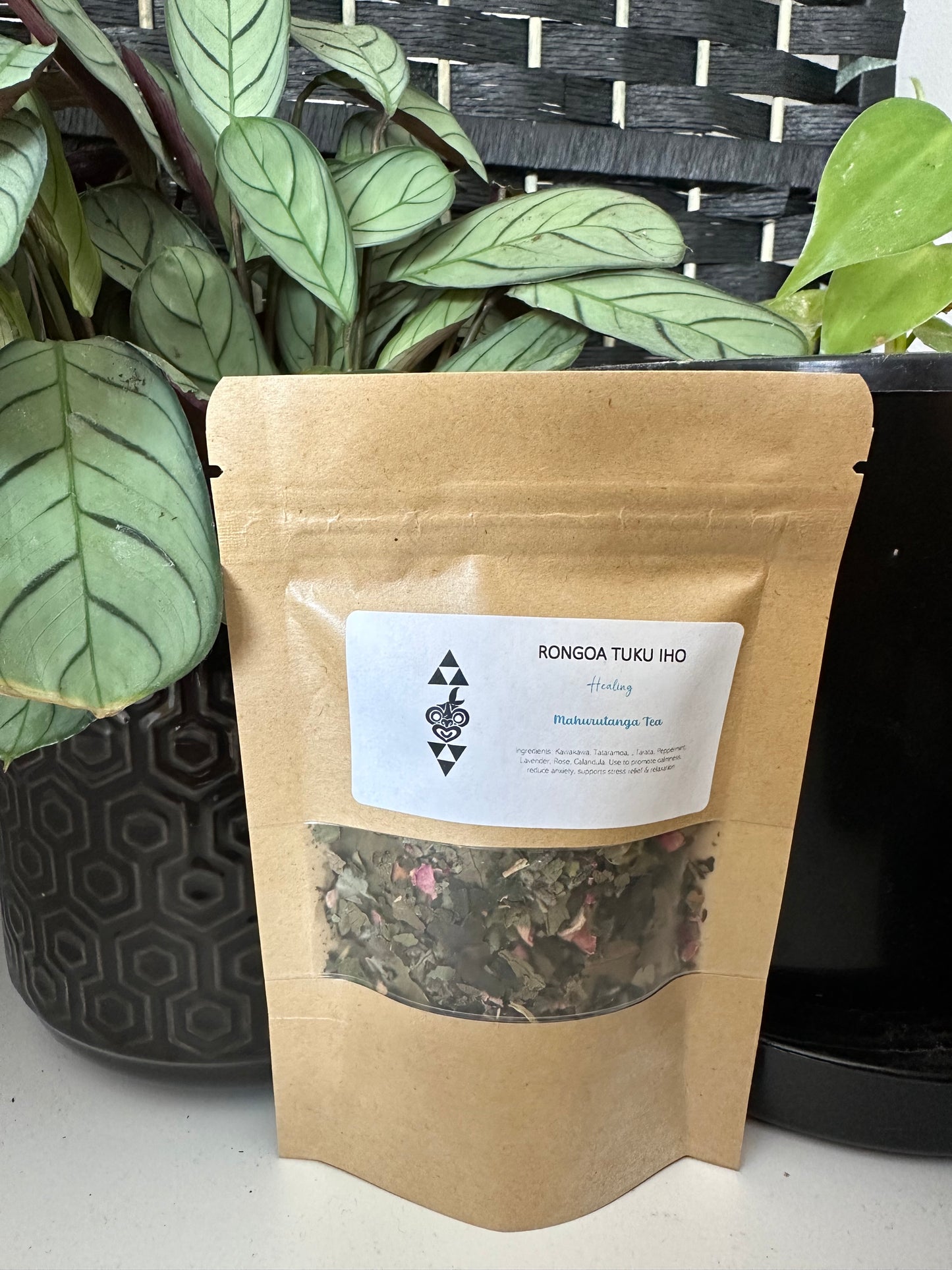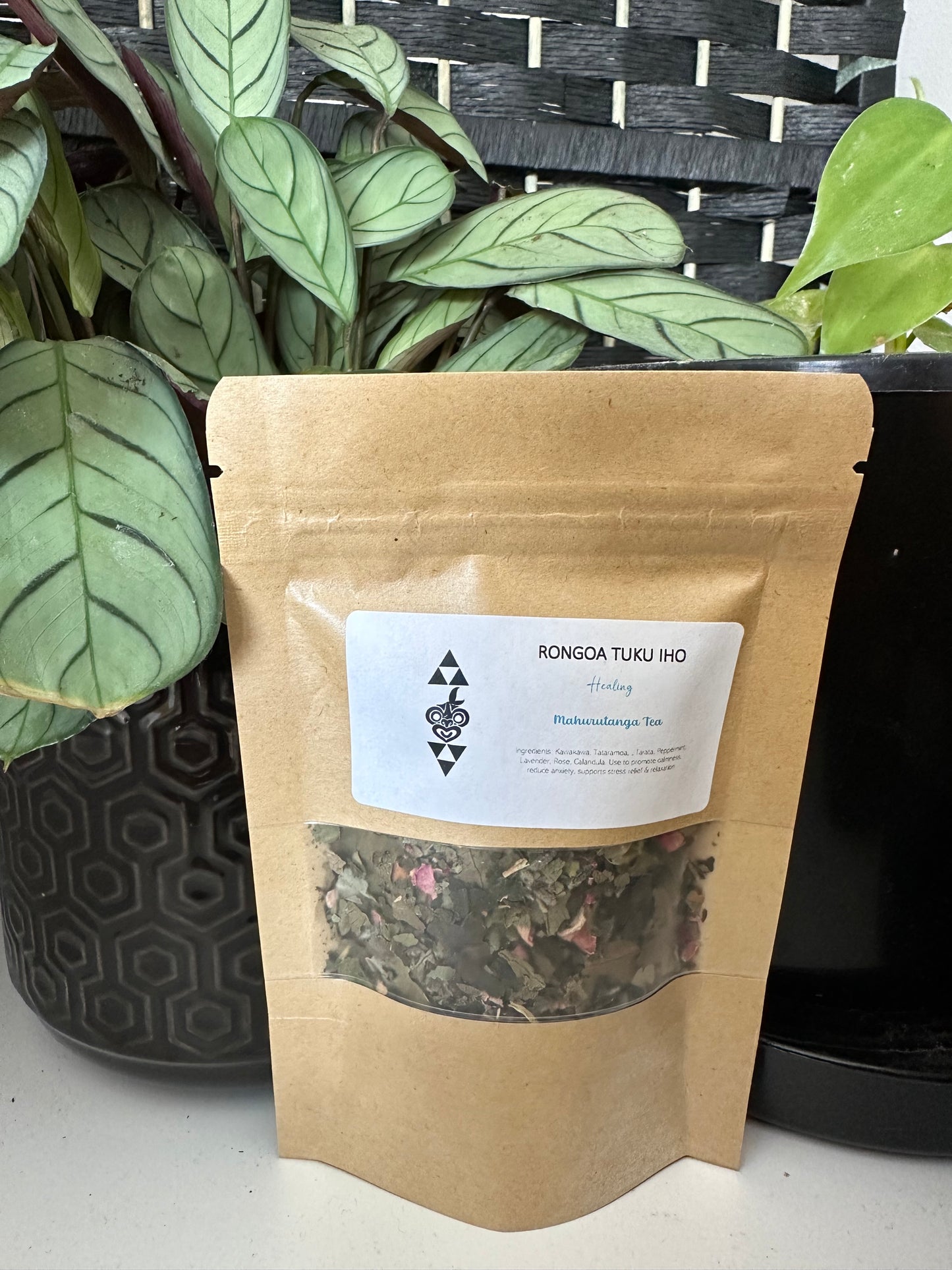RONGOA TUKU IHO HEALING
Rongoā Tī (Loose Tea Leaves)
Rongoā Tī (Loose Tea Leaves)
Couldn't load pickup availability
Kumarahou Tea:
Kūmarahou is utilized for addressing various ailments, notably bronchitis, colds, and asthma. It holds a significant place in Māori Rongoā, also serving as a remedy for tuberculosis while acting as a blood purifier, tonic, and liver cleanser. This herbal remedy proves highly beneficial for respiratory issues.
It's essential to heed your body's signals; individual responses vary. When feeling under the weather, consume one cup daily for two weeks, pause for 1-2 weeks, then resume if needed.
Kūmarahou carries a bitter taste. Whether raw or dried, it serves as a healing tea. Incorporating honey not only enhances its health benefits but also sweetens the bitterness. You can reuse the tea leaves multiple times and consume as required. Employ it at the onset of colds, flu, or chest ailments to mitigate infections.
Kawakawa Tea:
Kawakawa stands out as one of the most favored natural remedies recognized in Aotearoa. This bush tonic is revered for its ability to cleanse the kidneys and blood, ensuring optimal bodily function. Sourced from the wild, it's crucial to harvest only what's necessary and refrain from picking from the same site for at least two years. Leaves bearing insect-eaten holes are prime for harvesting, boasting the highest concentration of medicinal properties. With its earthy, peppery flavor, Kawakawa tea serves as a revitalizing tonic, enhancing energy levels and overall well-being.
However, it's important to exercise caution with Kawakawa. Start with a conservative amount, such as half a teaspoon in a full cup, and observe how your body responds.
Karamu Tea:
Traditionally employed to alleviate kidney, bladder, and stomach issues while promoting urine flow and reducing inflammation, Karamū has a rich history. Early settlers in New Zealand turned to Karamū as an alternative to china tea. Its mild flavor makes it an easily enjoyable beverage, with the option to enhance its benefits by adding Kawakawa.
Whether consumed alone or combined with Kawakawa during the day, it helps increase urine flow and aids in appetite suppression. I simply add a few leaves directly into my teapot and pour hot water over them, allowing it to steep for a few minutes. I prefer a longer brewing time of 10 minutes or more, but individual preferences may vary. You can start sampling the flavor at around 5 minutes and extend the brewing time if desired. Adding Kawakawa enhances its already pleasant taste.
Share








